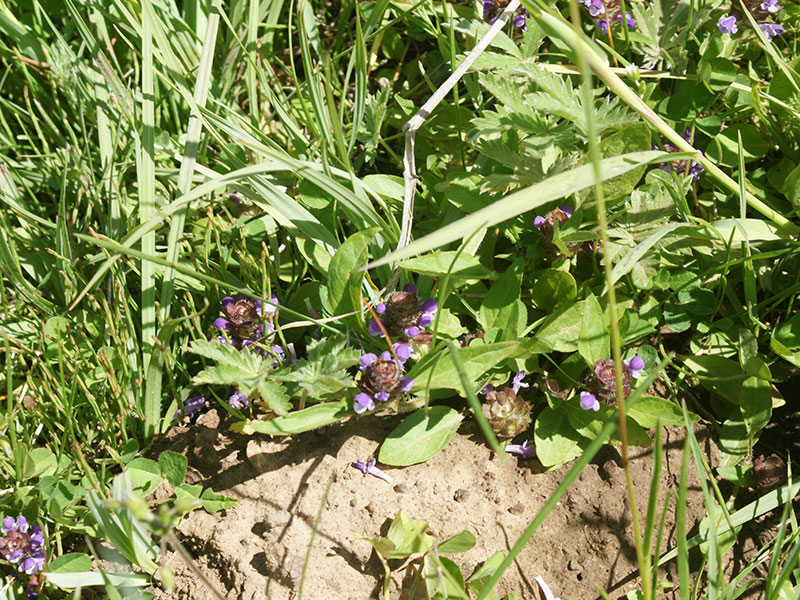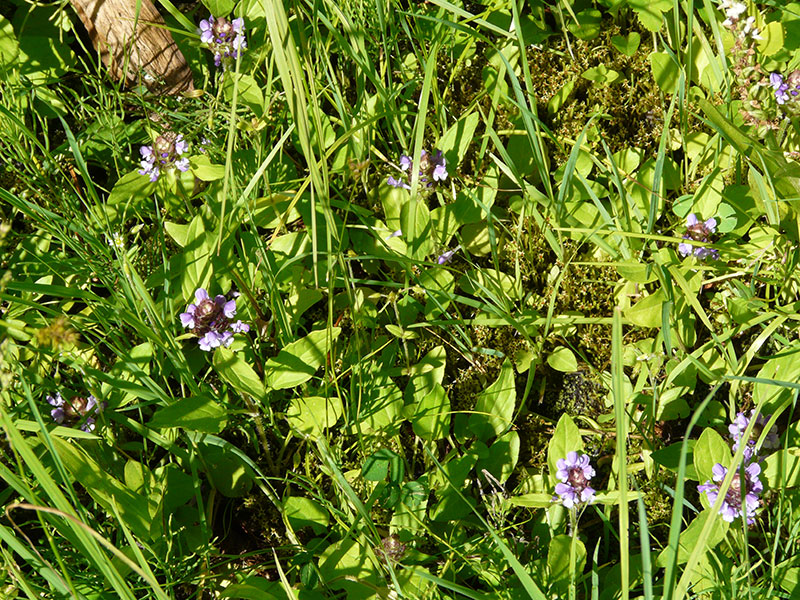Prunella vulgaris / self-heal
- compact spike of tiny purple, mint-like flowers
- upper/lower lips purple and white respectively
- square stems, opposite leaves
Also known as: heal-all, woundwort, heart-of-the-earth, carpenter’s herb, brownwort and blue curls, brunella
Self-heal is a member of the mint family with erect, many-flowers spikes of purple flowers. The spikes are compact initially, club-like, but they elongate after flowering and turn brown as the seeds ripen. Each flower has two lips, the lower one being more white than purple, and each has its own set of hairy bracts. Like all mints, self-heal has a square stem and opposite leaves. The stems branch at the leaf axes. Unlike most mints, however, it doesn’t smell (good or bad).
Self-heal propagates by seed quite well, but also by rooting of its creeping stems (stolons). It can root at every node, again like most members of the family. It can be propagated, if you really want to, by cuttings or by division. Rooting the stolons apparently gives larger plants in a shorter time, and you can easily make these cutting with a roto-tiller or hoe… in other words, it can be hard to get rid of.
Natural propagation by seed is at least interesting. Each flower produces 4 tiny brown seeds, enclosed in the persistent calyx. Dispersal is by “raindrop ballistics”, i.e. when a drop falls on the calyx tube, it bends and pops back up, flinging the seeds across your garden.
Although Prunella vulgaris is native to the US and to Idaho and to the Valley, its range has spread over time and the plant has become more common due to human activity. Now, it is found primarily on roadsides and woodland edges, in gardens and in waste-places. In lawns, it can tolerate mowing and like many other lawn weeds, can flower when only an inch or so tall. Though it likes moist areas, it seems to tolerate moderate drought quite well.
Despite the fact that people actually seem to grow this plant on purpose, the Invasive Plants Atlas includes it as an invasive weed, probably because it appears to be officially declared such in Kentucky.
| Color | |
|---|---|
| Family | |
| Blossom size | |
| Inflorescence size | |
| Inflorescence type | |
| When? | |
| Where? |


